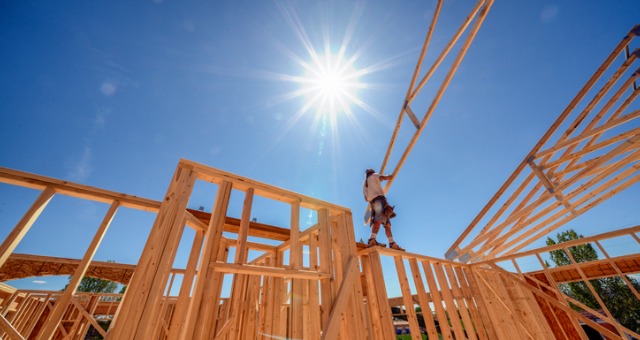If you're buying new this year, your choice in homes may skew slightly smaller.
That's because, according to the National Association of Home Builders (NAHB), homes keep shrinking. In the past four years, the average build downsized, and now clocks in at 2,520 square feet, with fewer rooms. Goodbye to the once-popular three-bathroom, four-bedroom layout, and cavernous garages for three (or more!) vehicles.
Despite less space, though, builders expect to pack in:
- A laundry room
- Low-emissivity ("low-e") windows
- A master bedroom walk-in closet
Notably, low-e windows, which are designed to let in light but also block heat, represent a trend. According to the NAHB, demand for energy-efficient features is up, but with exceptions. ENERGY STAR®-rated appliances and programmable thermostats? Yep. Cork flooring or geothermal heat pumps? Pass.
Overall, buyers care more about conveniences than square footage, NAHB says, preferring a smaller space, but with all the bells and whistles—like hardwood, a patio and a walk-in pantry—over a bigger home lacking their must-haves.
Compared to an existing home, they'll pay for it, too. According to Commerce Department figures, the average build costs $384,500.
For more 2020 home trends, check out:
- Cost vs. Value: 2020 Home Improvement Projects With the Highest ROI
- Top Design Trends to Follow for 2020
- 2020 Design: Ways to Enhance Your Home in the New Year
- 5 Green Designs and Amenities Every Real Estate Agent Should Know
- Classic Blue: Pantone's 2020 Color of the Year









I think this is a great idea, many people especially those of the younger generations are looking for something new but not huge. The 90’s and 2000’s boom of Mcmansions is over for now as many have realized that bigger is not always better. People just need a house that has all the common amenities, not a house to get lost in.